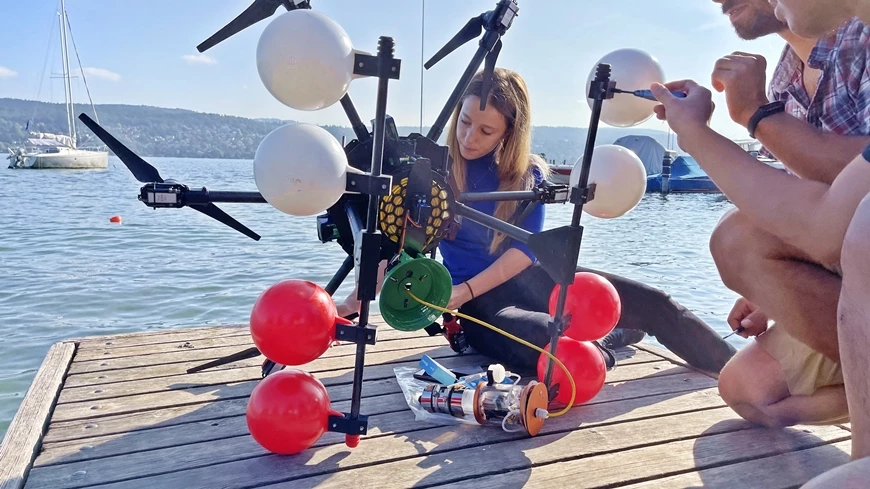Although aerial drones can travel much faster than their underwater counterparts, they certainly aren't as good at gathering water-related data. The MEDUSA multi-rotor drone addresses this conundrum, by landing on the water and deploying an underwater pod.
Its name an acronym for "Multi-Environment Dual robot for Underwater Sample Acquisition," MEDUSA is being developed by a team at Imperial College London. Testing has been performed in Switzerland, by the partnering Empa and Eawag research institutes.
Remotely piloted by a shore-based operator, the MEDUSA hexacopter starts by flying out to the area where the sampling needs to be performed – because it flies, it's capable of reaching places that might be inaccessible to a crewed watercraft. It then lands on the water's surface, supported by floats attached to its landing gear.
Once the drone is in place, its underwater pod is released from its underside.
The latter device can be lowered to a maximum depth of 10 meters (33 ft), remaining linked to the drone by a reeled electrical umbilical cable. Viewing a live feed from the pod's camera, the operator is able to collect water samples for subsequent analysis – the pod's own sensors are additionally capable of acquiring data such as water temperature, acidity, and microorganism content.
When the data-gathering is complete, the drone winches the pod back up by reeling in its cable. The whole setup is then simply flown back to its base.

In tests conducted so far, MEDUSA has been used to monitor Swiss lakes for cyanobacteria that could cause algae blooms. It is hoped that once developed further, the technology could additionally be utilized in applications such as looking for signs of climate change in the Arctic, or for monitoring underwater infrastructure like pipelines and the bases of floating wind turbines.
"MEDUSA is unique in its dual robot design, with a flight component that reaches difficult-to-access areas and a diving component that monitors water quality," said the lead scientist, Prof. Mirko Kovac. "Our drone considerably simplifies robotic underwater monitoring by performing challenging tasks which would otherwise require boats."
You can see MEDUSA in amphibious action, in the video below.
A Japanese consortium presented a similar system earlier this year, in which an aerial drone flew to a target location, landed on the water, then deployed an underwater drone from a cage on its underside.
Sources: Imperial College London, Empa




